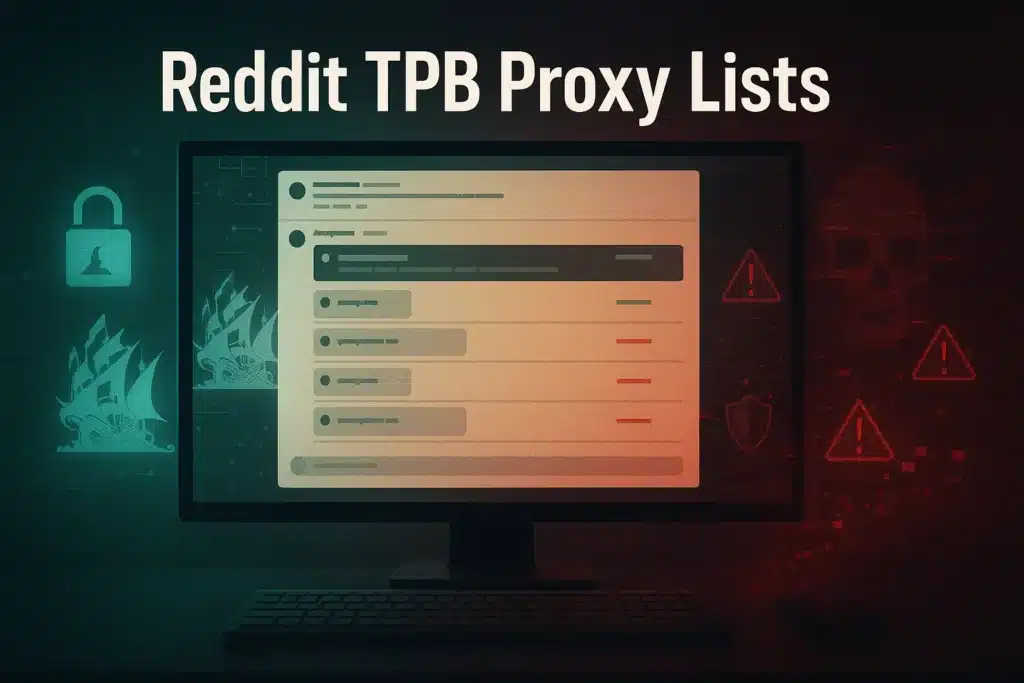Are you afraid of getting your SOCKS5 proxies blocked, and do you need a foolproof method of avoiding it? Yeah, it’s a very common issue among proxy users, but don’t fret; there are ways to get around it!
It’s a combination of choosing a good proxy provider, selecting the right proxy, using it responsibly, and finding the sweet spot in its configuration.
Below, I’ll talk about the best proactive measures you can take to never suffer from SOCKS5 blockages again!
| Interested in buying SOCKS5 proxies? |
| Check out our proxies! |
Choose a Reputable Proxy Provider
Table of Contents
ToggleSo, the first step in avoiding proxy blocks is finding a reputable and trustworthy proxy service provider. Here’s why that matters:
✓ Reliability – Trustworthy (veteran) providers will likely have a proven track record of consistent service and performance. Unreliable, untrustworthy, or unproven service providers may suffer from service disruptions and frequent downtime.
✓ Speed and Performance – Veteran proxy providers will typically have a robust infrastructure that offers optimal performance. This means higher speeds, faster connection times, and no timeouts. Lesser-known providers could lack the necessary resources to provide a premium experience.
✓ Security & Privacy – Different providers employ different security, privacy, and anonymity features. There are more secure and less secure providers out there, and sifting through them is necessary.
✓ IP Address Quality – Lower-rated proxy providers may use easily detectable IPs that services flag immediately. In fact, some of these IPs may already be blacklisted, and you won’t know it until you try to access a known service. Use established providers for higher-quality IP addresses!
The core idea is to do your research and not settle on the first SOCKS5 provider you see. That’s almost never a good idea, and it may lead to unexpected issues that shouldn’t exist.
The cause is a bad proxy provider. The same goes for VPN providers, cloud hosting services, and any other online service.
I recommend reading reviews (especially customer reviews on sites like Trustpilot), and seeing what kind of reputation a proxy provider has before making a decision.
Never put your privacy and anonymity in the hands of someone you don’t reasonably trust with your data. Long gone are the times when you could blindly use services and hope for the best.
Also read: Top 5 Best SOCKS5 Proxies
Choose the Right Proxy Type for the Job
Another reason why people get their SOCKS5 proxies blocked is that they’re using the right proxy for the wrong job. Or the wrong proxy for the wrong job…
The main decision is when you choose between:
- Static proxies
- Rotating proxies
- Datacenter proxies
- Residential proxies
The SOCKS5 rotating or static proxies dilemma goes much deeper than you’d think, and the same goes for SOCKS5 residential vs. SOCKS5 data center proxies.
Also read: SOCKS5 Rotating or Static Proxies
Mimic Human Behavior
One of the most common reasons for getting your SOCKS5 proxies blocked is unnatural and inauthentic behavior.
Here’s what I mean by this:
- You visit a website and keep scrolling over specific elements continuously.
- You do a lot of rapid-form submissions without any natural pauses.
- You perform an unusually high number of search queries in a very short time frame.
- You click on links or buttons in a very predictable and uniform manner.
- You don’t have a consistent time-of-day pattern in your activities.
- You access a website as soon as you start the proxy without any delays.
- You access multiple pages on a site without any natural delays or time lapses.
Automatic botting via proxies (Shopify bots, for instance) also counts as unnatural behavior. If the platform has anti-bot features installed, they’ll likely raise a flag and blacklist your IP.
In other words, engaging in suspicious or automated behavior may get you banned when using proxies.
So, the simplest way to avoid being blacklisted is to act normally. I realize “normal behavior” is vague, but you likely know what I mean.
Also read: Proxies for Shopify Bots
Avoid Engaging in Suspicious Activities
There are clear markers of suspicion when using proxies that will get you blacklisted on many platforms. Let’s go over the most important ones:
1. Excessive Requests
Repetition is one of the best indicators of suspicion. When you repeat an action countless times, you become an outlier.
Normal humans don’t do that. They don’t overuse a website’s search feature, looking for random things without any delays or pauses.
Moreover, sending an unusually high volume of requests in a short time also looks suspicious. It’s not authentic and genuine behavior.
2. Rapid Changes in Geolocation
With a rotating proxy, the proxy app will change your IP for every request or regularly based on an interval.
This means that with an IP, you might appear to be located in the US, while another IP shows your location in France.
Even if you select an IP cluster in the same country, your geo-location will still change every couple of minutes. And this isn’t realistic or genuine.
The more frequently you change geolocation with a proxy, the more suspicious you’ll appear to be and the more likely you are to be blacklisted.
3. Unusual Access Patterns
Genuine human behaviors translate to predictable navigation patterns. When you break those patterns and navigate systematically on websites, you might get flagged.
If you access pages on a website in a manner that deviates greatly from how a normal human acts, the algorithm might think you’re suspicious. Or even a bot.
Humans navigate erratically, they make unpredictable pauses, and there are delays between their interactions and web requests. There’s a typical navigation flow in genuine user behavior.
And if you don’t fall within that behavior, you could get your SOCKS5 proxies blocked without realizing what’s happening.
4. Aggressive Scraping Activities
This is the big one – engaging in aggressive data scraping activities. This is where you’re most likely to be flagged for inauthentic behavior.
While rotating proxies can help avoid rate limitations, they’re still not foolproof. If you engage in repeated data scraping on the same website, expect to be blacklisted at some point.
Scraping large amounts of data quickly will look suspicious, no matter how you put it. Especially if you’re using a static proxy.
5. Unusual IP Address Patterns
Sometimes, you might get your SOCKS5 proxies blocked through no fault of your own. The proxy itself is at fault because other users have done malicious or suspicious activities in the past using it.
This can happen with shared proxies that many people are using simultaneously. You can’t know or control what the other users are doing on the IP.
For all you know, they could be carrying out DDoS attacks or engaging in aggressive and overt data harvesting. And numerous websites end up blacklisting the IP.
This is where it becomes essential to do proper research before choosing a proxy provider. The difference between a reputable and a lesser-known provider is often massive.
Also read: 7 Mistakes to Avoid When Choosing SOCKS5 Proxies
Frequently Asked Questions
Q1. How to unblock blocked proxies?
If your proxy got blocked, there are a few simple ways to unblock or bypass the restriction:
1. Switch Your Proxy IP
The easiest method is to rotate to a new IP address, especially if you’re using a SOCKS5 proxy server that supports IP rotation.
2. Change Your Proxy Type
If your current proxy is detected, switching from HTTP to a SOCKS5 proxy server (or vice versa) can sometimes bypass blocks, since different proxies handle traffic differently.
3. Update Proxy Settings
Double-check your proxy settings to make sure everything is configured correctly (correct ports, IP address, credentials).
4. Change the Geographical Location
Choose proxies from a different geographical location, as the current region you’re using may be flagged by the website or service you’re accessing.
5. Use Higher-Quality Proxies
Low-quality or free proxies are often blacklisted. Switching to residential or premium proxies can solve the issue permanently.
Usually, just rotating your proxy or switching regions is enough to get you unblocked quickly!
Q2. Does SOCKS5 change IP address?
Yes, using a SOCKS5 proxy does change your IP address. When you connect through a SOCKS5 proxy, your internet requests pass through the proxy server, and the website or service you’re visiting sees the proxy’s IP instead of your own.
You can choose different proxy services to get specific IP types, like residential or mobile proxies. For example, residential proxy services provide real home IP addresses, making your activity look more natural and harder to detect.
Many SOCKS5 providers also offer rotating IPs, changing your visible IP regularly, which is great for tasks like web scraping, accessing geo-restricted content, or staying anonymous online.
So yes, SOCKS5 proxies absolutely change your IP, masking your real location and enhancing your privacy.
Also read: Exploring the Advanced Capabilities of SOCKS5 Proxies
Conclusion
To recapitulate, if you want to avoid getting your SOCKS5 proxies blocked, look towards these four things:
- The proxy provider you’re using. Are they reputable and trustworthy or less known?
- The specific proxy type you’re using. Rotating/static and datacenter or residential?
- Try to mimic human behavior while using the proxy. You want to appear as a genuine human being
- Avoid engaging in suspicious activities that might flag you for bot-like behavior
It’s not that hard to avoid having your SOCKS5 proxies blocked. But if you want to do slightly suspicious activities like data harvesting or bypassing geo-blocks, choose the proxy type carefully.
How useful was this post?
Click on a star to rate it!
Average rating 0 / 5. Vote count: 0
No votes so far! Be the first to rate this post.
Tell Us More!
Let us improve this post!
Tell us how we can improve this post?


